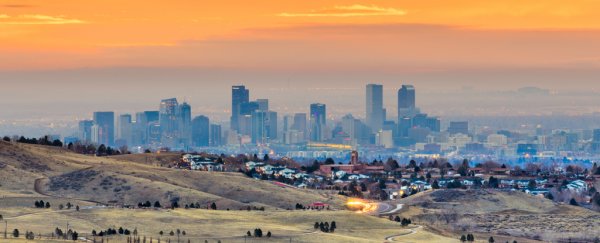Mounting evidence suggests humans are now a major driving force of evolution on Earth. From selective breeding to environmental modifications, we're altering so much of our world that we're not only now driving the climate, but the direction of life itself.
Now, in a massive project involving 287 scientists across 160 cities in 26 countries, researchers examined how urbanization has influenced evolution on a global scale. They used white clover (Trifolium repens) as a model – a plant native to Europe and west Asia, but found in cities all around the world.
"There has never been a field study of evolution of this scale, or a global study of how urbanization influences evolution," said evolutionary biologist Marc Johnson from the University of Toronto Mississauga (UTM).
Collecting more than 110,000 samples along gradients that extended from the cities, through suburbs and out to the country, they found that clover in cities is now more similar to clover in another city a world away than it is to that found in nearby farmland or forests, regardless of climate.
This is an example of parallel adaptive evolution – when separate populations are shaped by the same selective pressure for specific traits in different locations. It shows that the ways humans have changed the environment are having a bigger influence in shaping these traits than natural phenomena like local population genetics and climate.
While urbanization obviously shares many features around the world, it was not yet established that these were acting together to push evolution in the same direction.
"We just showed this happens, often in similar ways, on a global scale," said UTM ecologist James Santangelo.
"For urbanization to drive parallel evolution, urban areas must converge in environmental features that affect an organism's fitness," the researchers explained in their paper.
Taking a closer look, the international team identified that one of the features changing along urban to rural lines was the plant's production of hydrogen cyanide. White clover uses this chemical as both a defense mechanism against their herbivorous predators. It also helps them resist drought.
Plants in the furthest rural populations were 44 percent more likely to be producing hydrogen cyanide than those in the center of the cities. It appears that grazing is favoring the production of more hydrogen cyanide in rural areas than in cities, where grazing pressure isn't as strong; in absence of this pressure, drought becomes the driving factor.
This was despite strong gene flow between the white clover populations along each gradient, meaning that the levels of this chemical are being strongly selected for, time and time again.
We've already broken the natural size spectrum of animals in the ocean, in part by selectively removing large fish through fishing, leaving more fish with small fish genes to create subsequent generations. Many fishes are now 20 percent smaller and their lifecycles are 25 percent shorter on average.
The unintended consequences of our actions are also changing the shape of birds.
"The wing span of cliff swallows has evolved to be shorter near roads, with roadkilled swallows having longer wings, consistent with selection for increased maneuverability in the face of traffic," zoologist Sarah Otto explained in 2018.
These latest findings contribute another example of a clear urban signal in evolution. Studies have already suggested rates of evolutionary change are greater in urbanizing landscapes compared with natural and nonurban human systems.
"This is the most compelling evidence we have that we are altering the evolution of life in [cities]. Beyond ecologists and evolutionary biologists, this is going to be important for society," says UTM biologist Rob Ness. Particularly as we're expected to triple the amount of urbanized land by 2030 when compared to 2000.
The researchers have amassed a large database they can now further investigate for human impacts on clover evolution. By better understanding how we're incidentally driving such changes, we have a better chance of being able to intentionally take the wheel and direct evolution in an informed and safer way.
"This knowledge could help conserve some of Earth's most vulnerable species, mitigate the impacts of pests, improve human wellbeing, and contribute to understanding fundamental eco-evolutionary processes," the authors conclude.
This research was published in Science.
